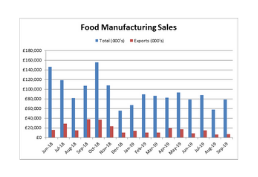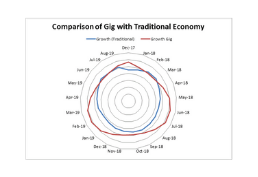UKPLC – CMR’s Proposed Programme of Research

UPDATE: New “Covid-19 Effect Survey”. Click here for details.
The business monitor and associated surveys are designed to provide an up to date assessment of the health of the UK economy.
Equally significant is that we provide subscribers with the facility to assess the potential for their products and services in a fast changing business world.
Most importantly the programme measures the impact of the Gig economy and other aspects of technological change through three key surveys:
a) The Population Survey – a telephone survey to cover the universe of all persons aged 16 or more in the UK. The questionnaire has been designed to establish broad details of their lifestyle in respect of their use of social media and various internet platforms and their relationship with the world of work. To ensure as representative a sample as possible we intend to employ a dual frame random sample of telephone numbers (mobile and landline RDD). We will not impose any demographic quotas on the survey because they might bias response rates, instead we will allow a long field period (5 weeks) to maximise the potential response across all ages and types of persons. Eventually we would expect to run this as a daily survey of not less than 100 interviews per day.
b) The ‘Traditional Economy’ Survey – a mixed mode survey (some on-line / some telephone) covering the business universe as defined by the IDBR, using the Business data produced by the ONS for our sample control purposes. Thus our universe is companies which are either VAT registered and / or have employees and we will interview a senior executive with knowledge of their company’s trading performance. Eventually we intend to build up to a sample of 6,000 companies per quarter, many of whom we will expect to be recruited to a regular quarterly panel. However, data collection will be distributed such that the data will be based upon 2,000 responses each month – average approximately 100 responses each working day. The sample will involve combining data from Dun and Bradstreet with information from Companies House, enabling some information from larger companies to be ascribed, where it is not provided directly by the respondent.
c) The Self-employed Survey – although there will be some self-employed within the traditional economy survey as described in b) we will require more information on the self-employed to effectively bridge the gap between surveys a) and b) above. We propose an online self-completion questionnaire very similar to that used for b) but targeted at persons identified as the self-employed. We will identify these from opt-in databases which Sample Answers have access to and we also hope to engage groups such as the FSB and IPSE to sponsor the survey and to invite their members to participate. The on-line process will ensure that each participating organisation is provided with its own ‘code’ which will identify their respondents separately from others. This will enable each source to be separately identified in the analysis to pinpoint any resulting bias. It also provides us with the ability to reward each participating organisation with a feedback report comparing their members’ views with those of other self- employed respondents.
Note: GiG-GEL™ represents the ratio of the growth in the GIG economy to the traditional economy, with GEL meaning General Economic Lift. The programme ensures complete coverage of the UK economy through three integrated data collection systems targeted at consumers, the self- employed and the traditional business sector (as identified in the ONS publication UK Business; activity, size and location).
Our customer service team provides suitable consultancy for clients to develop products and services appropriate to a changing world.
The UKPLC ‘team’ consists of Tony Dent, Chairman of CMR, supported by Iain MacKay as Chief Technical Officer and Phyllis Macfarlane as Head of Research. Noel Hadjimichael is the fourth member of the team, responsible for sponsorship arrangements.
The systems to conduct this work have been fully tested and the pre-Brexit benchmark work is therefore ready to ‘go’ immediately.
Examples of the information to be available:
Please click here for further Information on the background of the programme.


